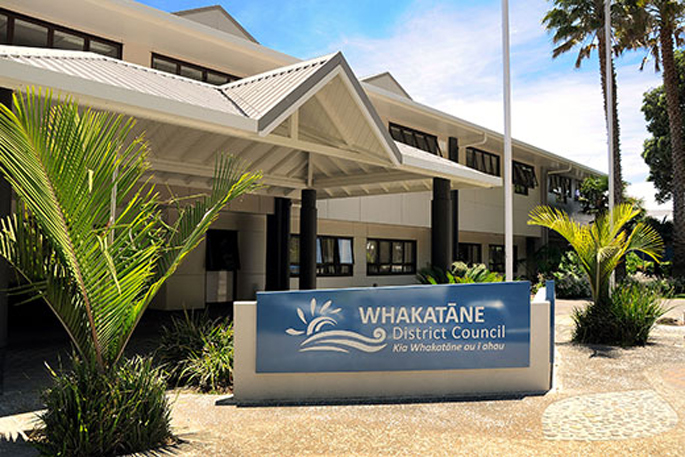Whakatane's average rate increase will be 6.94 per cent each year for the next three years, while its rates are the third highest in the country.
Following long-plan deliberations, in which there has been some careful pruning of budgets, Whakatane district councillors have arrived an average rate rise that is slightly more than the 6.84 percent originally indicated.
Whakatane district councillors has now firmly decided the Civic Centre, which is home to council staff, will receive the ultimate upgrade, that degraded waterways will be cleaned, that they will spend $750,000 on sealing rural roads each year and that they will raise the council's debt cap to 175 per cent of council's revenue.
Councillors also backtracked on some decisions after seeing the affect they will have on rates. This included $10,000 earmarked for the co-ordination of the Molly Morpeth Canaday Awards; council will now seek external funding for this.
They also removed $25,000 in funding for the Matata Lagoon after staff revealed there was already $75,000 in the budget. They also decided not to increase the annual grants fund. Funding for Active Whakatane will also not be increased and will stay at $1 million a year.
Staff told councillors that a question in the consultation document asking the community whether they would like to increase the funding by $1 million was incorrect. They were really wanting to know if the community was happy with the level of funding or whether it would like to see it decreased.
The long-term plan will be confirmed in July once it has been reviewed by independent auditors.
Civic Centre upgrade
Councillors left the decision on the Civic Centre until last, to have a better idea of how it might affect rates. The Civic Centre does not meet workplace health and safety standards due to temperature highs and lows during summer and winter.
Council went out to the community with three choices, a basic upgrade, a mid-level upgrade and a total refurbishment. The community supported the basic upgrade which would ensure the centre met health and safety standards and became more environmentally friendly.
Councillors chose the total refurbishment, which has the added benefits of providing more modern, adaptable workspaces, will shift the council chambers to the ground floor and enable use of the building as a community hub.
General manager development and environment David Bewley says it will be used to host emergency operations should a disaster strike.
David says having a good workplace was essential for recruiting and keeping staff.
Over 70 per cent of the money used to upgrade the building will be spent with local contractors.
Councillor Julie Jukes says she supports the upgrade as the council had a legal obligation to provide a safe workplace for staff. She notes moving staff out of the building for the duration of the work would cost $1 million.
'We don't want to do this again,” she says.
Councillor Nandor Tanczos says he was aware of affordability issues within the community but felt if the council did not do the job right first time it would be coming back to the community asking to do it again and that 'wouldn't fly”.
He says having council chambers downstairs and open to the public would provide transparency to ratepayers.
Mayor Judy Turner says if the council did not do it right the first time, it would have to go back to the community again in a few years, which would leave the impression that was all it focused on.
'My generation was happy to work in dark, dusty corners but this next generation won't,” she remarks.
'It will never be cheaper than it is now.”
Councillor Lesley Immink says she was 'uncertain” about the upgrade and that the public had not had all the information available. Lesley voted against the full upgrade, as did councillors Wilson James and Gavin Dennis.
Sealing of rural roads
After seeing the impact of their decision on rates, councillors settled on the more affordable amount of $750,000 for road sealing. This is a happy median between the two options proposed originally by council - $500,000 and $1 million.
Councillor Alison Silcock says the sealing of rural roads was very important and ratepayers had waited too long for it to happen.
Deputy mayor Andrew Iles thanks the other councillors for voting to seal roads.
'It's something I've banged on about for so many years,” he says.
'So many people in our district can't afford to live anywhere else than on these unsealed roads.”
Whakatane rates third highest in country.
Whakatane residents are paying the third-highest rates in the country, according to the Taxpayers' Union. The Taxpayers' Union released its Ratepayers' Report yesterday, which compares council rates and salaries.
The report states that Whakatane District Council's average residential rate of $3314 is the third highest in the country, beaten only by Carterton District Council's average rate of $3639 and Auckland Council's average rate of $3599.
The average income in the Whakatane district is $55,201 compared to $52,028 in the Carterton district and $140,024 in Auckland.
A viral graph making the rounds shows that to afford the average home in the Bay of Plenty, a person must earn $121,280.
Opotiki District Council came in 18th place on the rates table with an average residential rate of $2796.
Kawerau District Council came in the cheapest in the Eastern Bay and 56th overall with an average residential rate of $2214.
It did, however, charge the highest non-residential rates in the country, with an average rate of $31,937.
The cheapest council in the country is Buller District Council with an average rate of $1815.




0 comments
Leave a Comment
You must be logged in to make a comment.